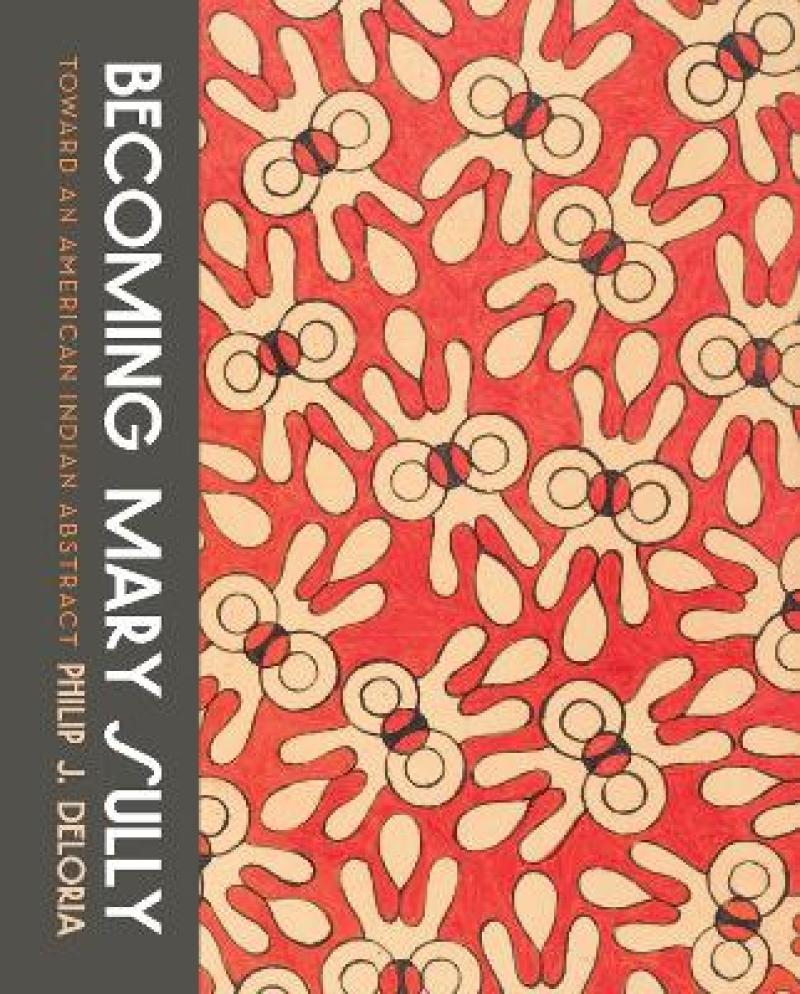<p>"The moment to savor [Mary Sully's] semi-abstract celebrity 'portraits' (Albert Einstein, ZaSu Pitts), which combine a modernist spirit and Native American aesthetics, has arrived."</p> (New York Times) <p>"In his evaluation of Sully and her work, Deloria leaves no stone unturned. What results is a compelling model—grounded in comprehensive historical and cultural analyses—for evaluating the works of women artists disconnected from larger art movements. In the case of Mary Sully, our understanding of her art and life reveals a unique approach by a bicultural woman that rejects limited views on American Indian art in favor of one grounded in an imagined American Indian futurity that should most certainly lead us to question our understanding of American modern art as a whole."</p> (Woman's Art Journal) <p>"A significant contribution to a growing body of literature recognizing the roles of women in creating an Indigenous futurity rooted in self-representation and self-determination. The cultural work of women like Mary Sully challenges narratives that place Indigenous people outside of, and in opposition to, the modern world."</p> (Momus) <p>"<i>Becoming Mary Sully</i> introduces the stunning and original work of a heretofore unknown artist."</p> (Artblog) <p>"Phil Deloria's <i>Becoming Mary Sully</i> endows what may seem to be a modest group of documents with radical potential. Moving through biography, formal analysis, art criticism, ethnographic and psychological theory, and Oceti Sakowin history and values, he offers an extended argument for seeing the work of this self-taught artist as engaging modernity from a deeply Indigenous perspective."</p> (Native American and Indigenous Studies Journal) <p>"In Deloria's fascinating study of Sully's previously unknown work, a project both deeply personal and highly attentive to broader historical and artistic currents, he locates a new narrative of Indian futurity and survivance in the realm of modernist aesthetics."</p> (Western Historical Quarterly) <p>"Sully's sensitivity to her cultural influences and history is acute and visionary, and Deloria's analysis and scholarship communicates his deep respect for her vision. Emerging from potential obscurity, Sully's work deepens cultural perceptions of American Indian abstraction."</p> (Hyperallergic) <p>"A historian by trade, Philip Deloria's impressive first venture into art history continues his preoccupation with how Indigenous presence throughout American history undermines codified myths of primitivism and disappearance."</p> (Panorama: Journal of the Association of Historians of American Art)
"The moment to savor [Mary Sully]. . . has arrived." —New York Times
Dakota Sioux artist Mary Sully was the great-granddaughter of respected nineteenth-century portraitist Thomas Sully, who captured the personalities of America's first generation of celebrities (including the figure of Andrew Jackson immortalized on the twenty-dollar bill). Born on the Standing Rock reservation in South Dakota in 1896, she was largely self-taught. Steeped in the visual traditions of beadwork, quilling, and hide painting, she also engaged with the experiments in time, space, symbolism, and representation characteristic of early twentieth-century modernist art. And like her great-grandfather Sully was fascinated by celebrity: over two decades, she produced hundreds of colorful and dynamic abstract triptychs, a series of "personality prints" of American public figures like Amelia Earhart, Babe Ruth, and Gertrude Stein.
Sully's position on the margins of the art world meant that her work was exhibited only a handful of times during her life. In Becoming Mary Sully, Philip J. Deloria reclaims that work from obscurity, exploring her stunning portfolio through the lenses of modernism, industrial design, Dakota women's aesthetics, mental health, ethnography and anthropology, primitivism, and the American Indian politics of the 1930s. Working in a complex territory oscillating between representation, symbolism, and abstraction, Sully evoked multiple and simultaneous perspectives of time and space. With an intimate yet sweeping style, Deloria recovers in Sully's work a move toward an anti-colonial aesthetic that claimed a critical role for Indigenous women in American Indian futures—within and distinct from American modernity and modernism.
Produktdetaljer
Om bidragsyterne
Philip J. Deloria (Dakota descent) is professor of history at Harvard University and the author of Indians in Unexpected Places and Playing Indian. His most recent book, coauthored with Alexander I. Olson, is American Studies: A User's Guide. He is a trustee of the Smithsonian Institution's National Museum of the American Indian, where he chairs the Repatriation Committee; a former president of the American Studies Association; and an elected member of the American Academy of Arts and Sciences.

